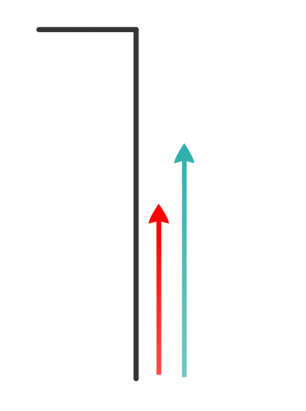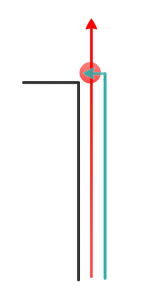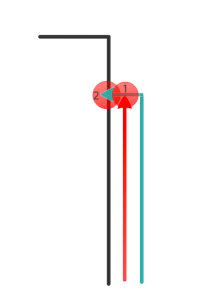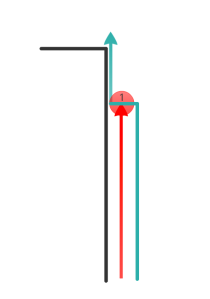I am a fan of armagetron, the game based on tron lightcycle sequence, so much so that I spent months trying to draw people’s attention to it in education. I played with Wendy and her two children yesterday, Joe 6 and Anna 10. I was reminded of the incredible teamwork the game engenders. It remains a game that can insert open source into schools and help revolutionise the system.
What makes me write the post, however, is not the teamwork, it is the simple experience I had when I was playing with Joe. When we played a few weeks ago, he demanded that the ping be increased, from 1, the game local default, to 10, then 50. He wanted it higher, but I just thought that by then he is learning very little. We were running on the idea that he needed more time to see what to do. I mean, it stands to reason. He keeps on crashing, so give him some more time.
But for some reason, this time, he said he wanted cycle_rubber 0. I looked at him as he asked for this, shocked. And we did. Best decision we ever made. For one thing, the AI is not as good at 0. Which means we, as a team, won a little more. But then something truly startling arose.
After the split, Joe often got in a position where he was ahead of an opponent, leading him down a tunnel. He could see the end of the tunnel, but if he waited till then, the opponent accelerates because they are in the tunnel and close to both walls.
So I told Joe to block him while he was ahead. I had to stop playing as I noticed what he was doing. He would go left, and because the width of the tunnel was so close, he would end up crashing into the other wall of the tunnel.
That’s why we went down the path of increasing rubber, so that he would have time to see what he was facing, and thus turn from the wall. However, this doesn’t quite make sense. Are we suggesting that this 6 year old can not see the black when when he turns against it? A six year old? He lacks reaction time? And his mother thought it was because his wiring was not established. Possible, but let’s see what actually happened.
I told him a tactic, to shimmy.
That is, to quickly turn left and right. Not complicated. But he couldn’t. I asked him to just do it on the keyboard, left right. He could manage this easily, really quickly. But again, when we returned to the game, immersed, with the actual enemy in the tunnel, he couldn’t do it. He was pressing the keys aggressively, as if by pressing harder, it would work better. I told him to do it lightly, just simple tapping, as he had done. And as he was doing this came to my mind, and excitedly to my lips:
Just like one letter and another letter, two separate letters, left and right, but together they are more than two letters, they are a word.
There is a direct relationship between his wiring together of left and right as a “move” or tactic, to combine them into a unit of actionable meaning, a meme, and what he is doing in school as he is learning language. A few weeks ago he was having difficulty reading. He was reading each letter separately, and he could not see the pattern of the whole word. It is a bit of a jump for all of us, after all. And I hunted for some learning materials which outlines the word, the shape of the whole thing, thus engaging his right hemisphere etc etc. I even got him reading the words upside down. Seemed to do the trick. He seems to be moving on nicely with reading. And now this!
Tron can be used as an experiential basis to explain how language works — to a six year old! He can directly map his left/right combo to his reading of two letter to one “meme”. Incredible.
And sure enough, he managed to defeat the opponent. Will require a little bit of practice. But once he gets the combining trick, he’ll be able to do this with more than two moves, or letters. It is a multiplier, an accelerator of learning. Joe is going to go through an amazing few weeks…
But just to return to what we did. We thought it was to do with reaction time. It was not. Another way to think about it is this: he could not see beyond his next decision. (Does this remind you of a phrase in Matrix by any chance?) That is, he could not see that after turning left, he had to turn right immediately. He tried to press the left key harder at first, to indicate he knew he really had to do something, but he still waited to see what was on the screen to make the move.
I have experienced this myself in the game, sometimes, where the mind must perform quicker than it can see. It sees the whole maze ahead, which may involve five key presses. And it must perform them sequentially without any brain signal going into as it is happening. Getting in the zone, I believe it is called. And in tron, this zone, is in the micro-seconds beneath the mind’s perceptual ability to respond.
Incredible.
All in an open-source computer game. Which is another reason why we need this game in schools. Imagine the utility for teachers to explain directly, experientially. Imagine schools teams playing against one another. Combine this with eco^2, and we have ourselves a global million-dollar competition within a year. In education. Funding educational enterprise. — But of course, this doesn’t make any sense to many of us, because we probably can’t see beyond the next decision, just like Joe… Social confluence has this quality, and the only way to overcome it is trust, again something many of us are a little skeptical of.
Tron as the minimal meme, for language, strategy, teamwork… coding, open source… education, economic experiment…





Powerful stuff, David – did I ever share this with you? http://home.pct.edu/~evavra/kiss/wb/IM/PLModel/Int000.htm – LC
superb!
yes i remember seeing it
but as usual
it hadn’t percolated the brain…
i really don’t learn very well in certain ways…
too much plugged in to the present i am guessing…